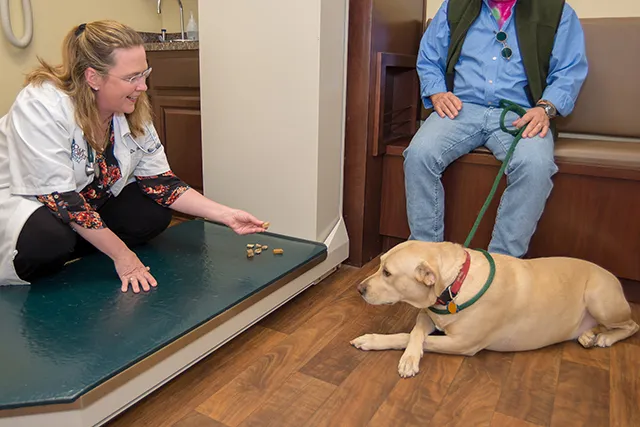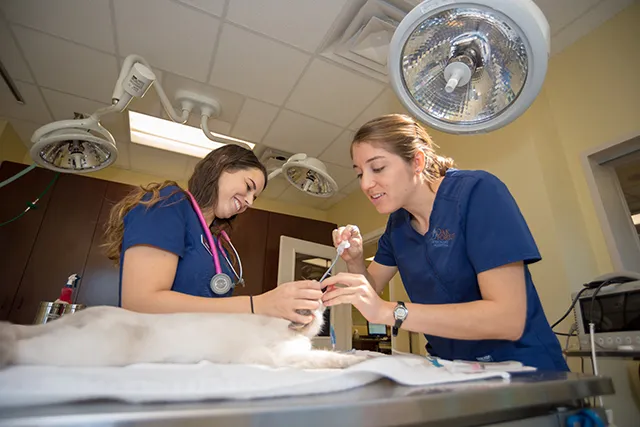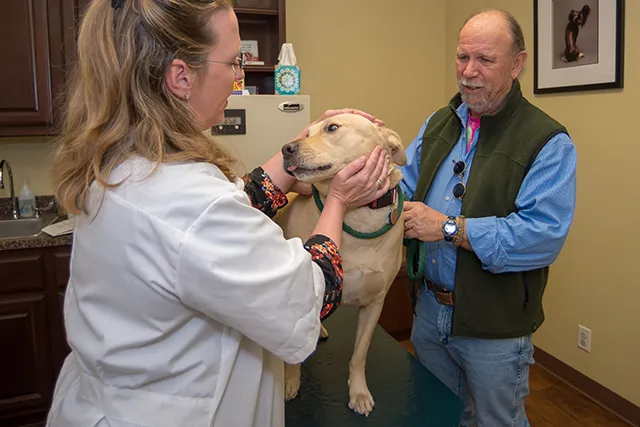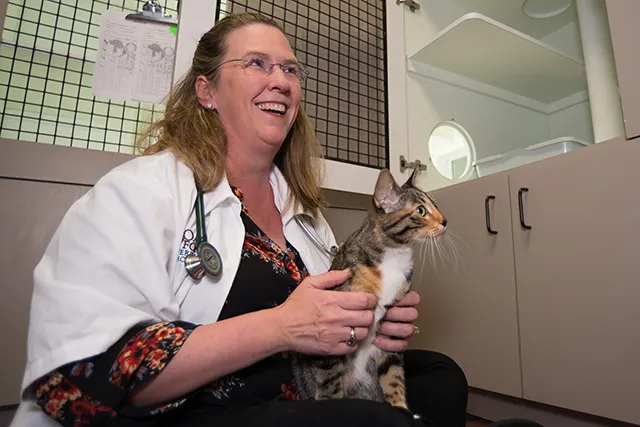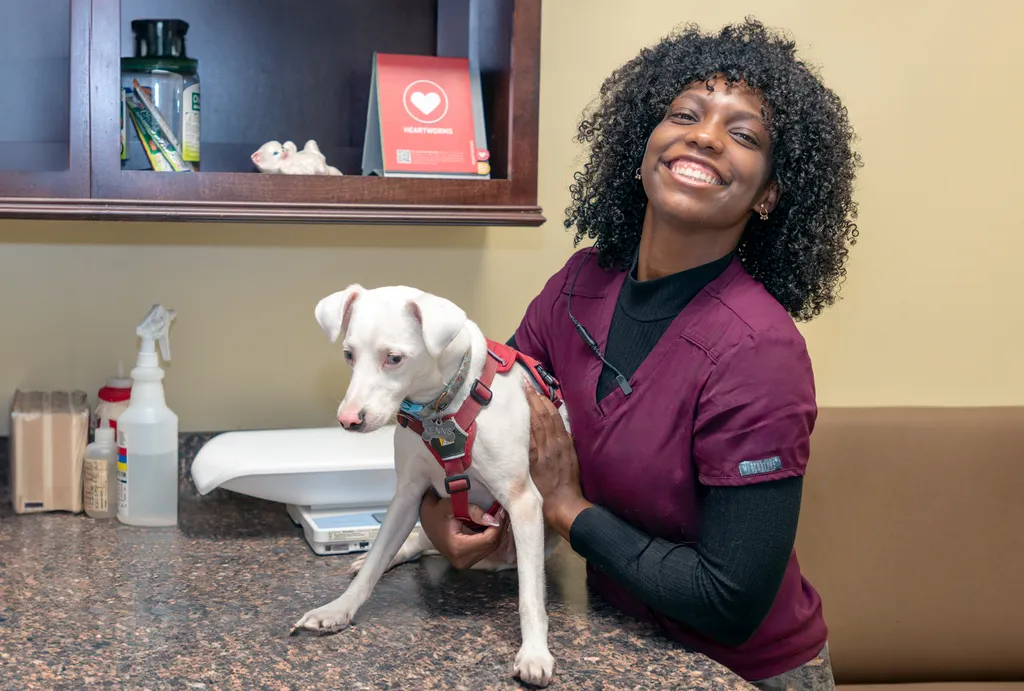It’s hard for pet owners to know whether their dog or cat is experiencing a dental health issue. That’s where our veterinary team can help. We’ll take into account things like bad breath, excess tartar, inflamed gums, and missing/broken teeth. Increased drooling, decreased toy play, and a decline in grooming behavior are other signs we’ll look for along with you — our eyes and ears at home.
Dental disease happens in stages. Infected gums and teeth can mean a problem with the heart, kidneys, intestinal tract, or joints. This is because tartar is bacteria and it can spread to other parts of the body. That’s why we do tartar removal, removal of diseased teeth, and tooth polishing since a smooth tooth is harder for bacteria to grow on.
Regular veterinary dental care helps prevent some of the serious issues that can develop in your dog or cat’s lifetime.
Our staff checks for the following issues during a dental exam and cleaning:
- Cavities
- Gum pockets
- Loose teeth
- Growth on gums
- Growth on the palate
- Diseased teeth
Contact us today to set up a dental cleaning session for your pet. It’s important we do some pre-dental blood work on your animal since anesthesia is used during dog and cat teeth cleanings.
In the meantime, consider doing the following for your pet’s oral health:
- Avoid human toothpaste. It’s not meant to be swallowed.
- Find a toothbrush your pet doesn’t mind. If your cat or dog does not like the brush on his or her teeth or in the mouth, look for cleaning tools like fingertip brushes.
- Start small. You don’t need to vigorously brush your pet’s teeth as you introduce regular dental care. This can aggravate your pet and even make him or her aggressive. Use a small amount of toothpaste, and clean the teeth gently and briefly at first.
- Aim to brush your pet’s teeth three times a week.
